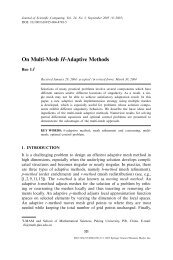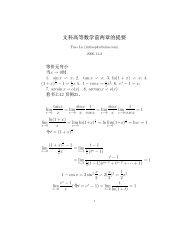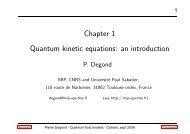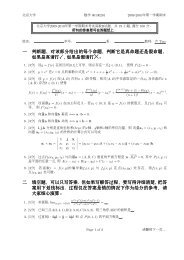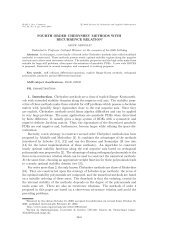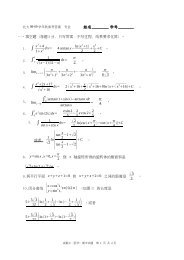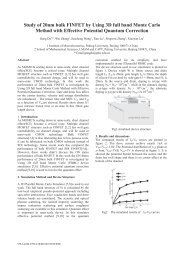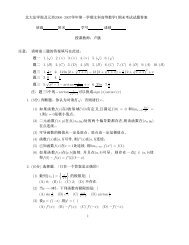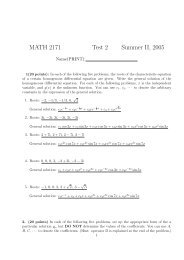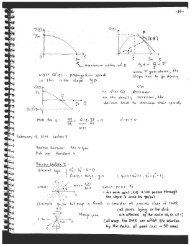Abstract
Abstract
Abstract
Create successful ePaper yourself
Turn your PDF publications into a flip-book with our unique Google optimized e-Paper software.
CHAPTER 3. BIFURCATION ANALYSIS 50<br />
(α − ¯r 2 ) > 0 =⇒ d¯r<br />
> 0. So ¯r = 0 is an unstable equilibrium, since any small<br />
dt<br />
increase in ¯r will force ¯r to continue to move away from ¯r =0. Inthecaseofα>0,<br />
if ¯r > √ α, then by a similar argument, d¯r<br />
dt < 0. So if ¯r = 0,¯r approaches √ α for<br />
α>0. So we have a stable closed orbit in this case.<br />
If we start the parameter α as a negative value, then the origin is a stable equi-<br />
librium. As we increase the parameter, the origin remains stable until α becomes<br />
positive. Then the origin turns unstable and an oscillatory solution to the ODE<br />
appears. This is what is known as a Hopf bifurcation. As shown in this example,<br />
a Hopf bifurcation is characterized by a pair of complex-conjugate eigenvalues’ real<br />
parts going to zero.<br />
3.3 Continuation Methods<br />
Continuation algorithms map out a system’s steady-state solution branches as a sys-<br />
tem parameter is being changed. To do this numerically, we connected our simulator<br />
to the Library of Continuation Algorithms (LOCA), a software library developed at<br />
Sandia National Laboratories [33]. LOCA has three continuation algorithms available<br />
for the user: a zero order continuation, a first order continuation, and a pseudo arc-<br />
length continuation. LOCA also incorporates an eigensolver that checks the eigenval-<br />
ues of the Jacobian matrix of the system to determine the stability of the steady-state<br />
solution.<br />
Numerically, we plan on generating a sequence of parameters {V j } along with




